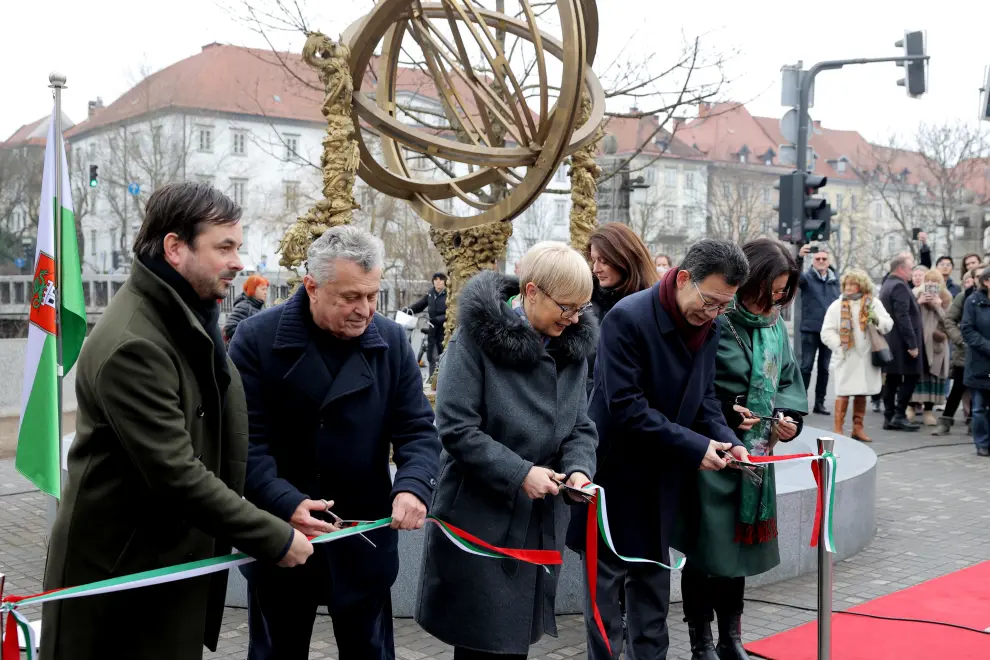Monument celebrates Slovenian polymath and ties with China
Slovenia's 18th century polymath Ferdinand Avguštin Hallerstein spent more than three decades at the Chinese imperial court and one of the achievements he is best known for is an armillary sphere that he built at the Beijing Observatory. A replica of the sphere has now been erected in Ljubljana as a symbol of Chinese-Slovenian friendship.
At 3.7 long, 2.1 metres wide and 3.3 metres high, his armillary sphere, an instrument also known as a spherical astrolabe, was unique in that Hallerstein combined a heliocentric design then used in Europe, and an equatorial placement that had been customary in China at the time.
The replica has been erected along Šentjakob Bridge in Ljubljana old town, very close to Grubar Palace, which had been built at roughly the same time, and close to Zvezdarska Street, named after the observatory that used to operate in Grubar Palace.
 Officials perform a ribbon-cutting ceremony for a monument to 18th-century Slovenian monk and polymath Ferdinand Avguštin Hallerstein. Photo: Daniel Novakovič/STA
Officials perform a ribbon-cutting ceremony for a monument to 18th-century Slovenian monk and polymath Ferdinand Avguštin Hallerstein. Photo: Daniel Novakovič/STA
Addressing the unveiling ceremony on 6 February, President Nataša Pirc Musar said the monument honoured Slovenian diplomacy and science since Hallerstein was also a diplomat, but it also "honours excellent relations that Slovenia and China have established and are nurturing."
Chinese Ambassador to Slovenia Wang Shunqing said the monument represented four centuries of friendly exchanges between Slovenia and China.
"Hallerstein, who lived in China for 36 years, not only started the history of friendly exchanges between China and Slovenia, he also made made an exceptional contribution to exchanges between eastern and western civilisations," he said.
Born in Mengeš, north-east of Ljubljana, Hallerstein (1703-1774) first studied at the Jesuit college in Ljubljana and continued his studies in Vienna. After his studies he spent some time in Romania and left for China in 1736 via Goa and Macau. He started working in Beijing in 1739 and went on to become the head of the royal observatory and a mandarin.



